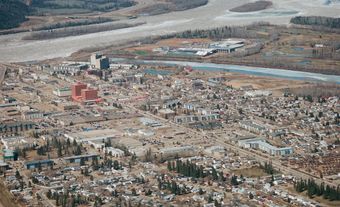Food Banks
In Canada, the term "food bank" is often used to describe any cache of food designated for charitable purposes. In its most specific sense, however, the term food bank is used to describe any large-scale food recovery program that redistributes food, free of charge, to the community, usually through existing social service agencies or churches.
Initially developed in the US, the food bank concept was first successfully developed on a large scale in Canada by the Edmonton Gleaners Association (incorporated on 16 January 1981). The initial impetus for the development of food banks was the clear evidence of unmet needs in the community, which exist largely because of limitations or failings in social service systems. This provided the primary motivation for churches and agencies to undertake the provision of direct, emergency food services to private homes. Another major function of food banks is the supplementing of institutional feeding or kitchen programs with "salvageable," or "surplus," food collected from manufacturers, grocers, retailers and wholesalers. Public canned-food drives and food purchased through donated funds account for the rest.
Funding for food banks varies greatly from city to city. Some major food banks have accepted government support; however, food banks often decline government funding, preferring to operate on publicly donated funds rather than becoming an established part of a government structure. Others receive support from their local "United Way" fund-raising organizations (eg, Edmonton, Montréal, Ottawa). Food banks, by and large, proclaim themselves to be voluntary, "short-term emergency" responses to the problem of hunger, and call upon governments and other established agencies to develop co-ordinated strategies to deal with the problem in the longer term. Some food banks have played a key role in highlighting major problems and openly advocating improvements.
Conferences held in Edmonton (1985) and Toronto (1986) led to the establishment of a national organization, Canadian Association of Food Banks (now Food Banks Canada). Forty-three food banks from across the country made up the original membership of the association in 1989. Its membership has since risen to some 450.
Who Uses Food Banks
Each year since 1989, Food Banks Canada has released HungerCount, a national survey of food bank use in Canada. The 3 largest groups are people receiving social assistance, disabled individuals and the working poor. Hunger is not just the reality of people living in Canada's cities; about half of the food banks participating in the HungerCount are located in rural areas (in communities of 10 000 or less). More than 50% of assisted households have children; about one third of food bank clients are children.

 Share on Facebook
Share on Facebook Share on X
Share on X Share by Email
Share by Email Share on Google Classroom
Share on Google Classroom


